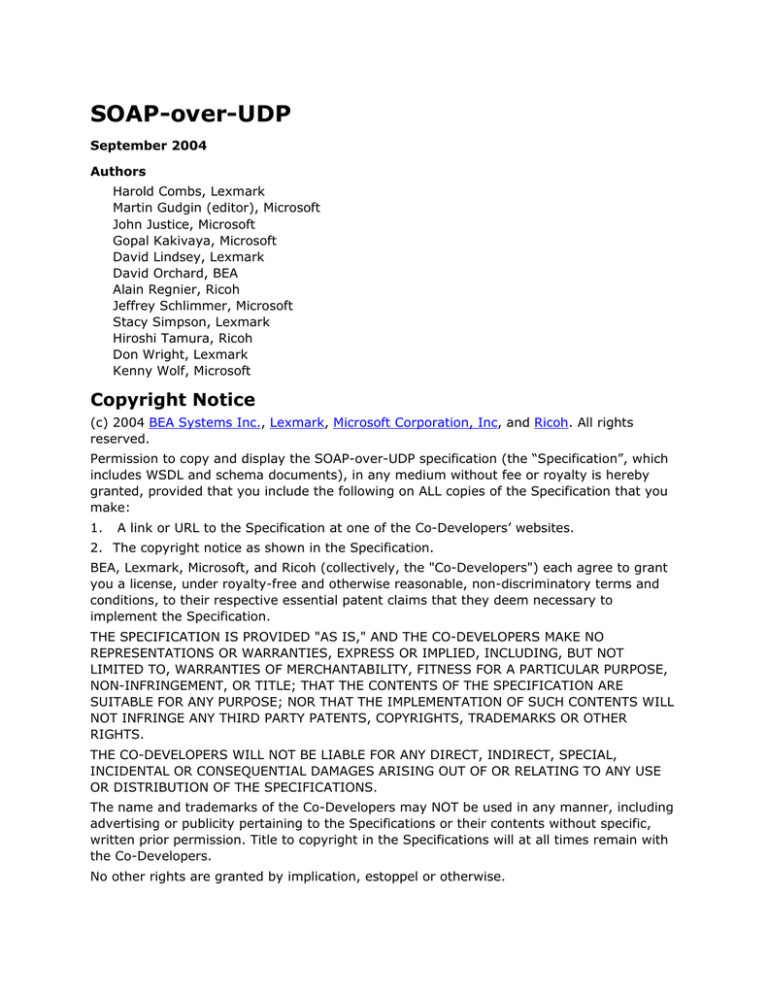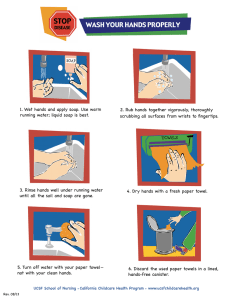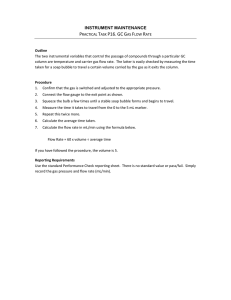
SOAP-over-UDP
September 2004
Authors
Harold Combs, Lexmark
Martin Gudgin (editor), Microsoft
John Justice, Microsoft
Gopal Kakivaya, Microsoft
David Lindsey, Lexmark
David Orchard, BEA
Alain Regnier, Ricoh
Jeffrey Schlimmer, Microsoft
Stacy Simpson, Lexmark
Hiroshi Tamura, Ricoh
Don Wright, Lexmark
Kenny Wolf, Microsoft
Copyright Notice
(c) 2004 BEA Systems Inc., Lexmark, Microsoft Corporation, Inc, and Ricoh. All rights
reserved.
Permission to copy and display the SOAP-over-UDP specification (the “Specification”, which
includes WSDL and schema documents), in any medium without fee or royalty is hereby
granted, provided that you include the following on ALL copies of the Specification that you
make:
1.
A link or URL to the Specification at one of the Co-Developers’ websites.
2. The copyright notice as shown in the Specification.
BEA, Lexmark, Microsoft, and Ricoh (collectively, the "Co-Developers") each agree to grant
you a license, under royalty-free and otherwise reasonable, non-discriminatory terms and
conditions, to their respective essential patent claims that they deem necessary to
implement the Specification.
THE SPECIFICATION IS PROVIDED "AS IS," AND THE CO-DEVELOPERS MAKE NO
REPRESENTATIONS OR WARRANTIES, EXPRESS OR IMPLIED, INCLUDING, BUT NOT
LIMITED TO, WARRANTIES OF MERCHANTABILITY, FITNESS FOR A PARTICULAR PURPOSE,
NON-INFRINGEMENT, OR TITLE; THAT THE CONTENTS OF THE SPECIFICATION ARE
SUITABLE FOR ANY PURPOSE; NOR THAT THE IMPLEMENTATION OF SUCH CONTENTS WILL
NOT INFRINGE ANY THIRD PARTY PATENTS, COPYRIGHTS, TRADEMARKS OR OTHER
RIGHTS.
THE CO-DEVELOPERS WILL NOT BE LIABLE FOR ANY DIRECT, INDIRECT, SPECIAL,
INCIDENTAL OR CONSEQUENTIAL DAMAGES ARISING OUT OF OR RELATING TO ANY USE
OR DISTRIBUTION OF THE SPECIFICATIONS.
The name and trademarks of the Co-Developers may NOT be used in any manner, including
advertising or publicity pertaining to the Specifications or their contents without specific,
written prior permission. Title to copyright in the Specifications will at all times remain with
the Co-Developers.
No other rights are granted by implication, estoppel or otherwise.
Abstract
This specification defines a binding for SOAP envelopes to user datagrams.
Status
SOAP-over-UDP and related specifications are provided as-is and for review and evaluation
only. BEA Systems, Lexmark, Microsoft, and Ricoh make no warrantees or representations
regarding the specifications in any manner whatsoever.
Table of Contents
1. Introduction
1.1 Requirements
1.2 Relationship to Web Service Specifications
2. Notations and Terminology
2.1 Notational Conventions
2.2 Terminology
3. UDP Packet
3.1 Source Address and Port
3.2 Data Octets
4. Message Patterns
4.1 One-way
4.1.1 One-way Example
4.2 Request-response
4.2.1 Anonymous [reply endpoint]
4.2.2 Request Example
4.2.3 Response Example
4.3 Multicast
4.4 Retransmission
5. Message Encoding
6. URI Scheme
6.1 Syntax
6.2 Semantics
7. Security Considerations
8. Acknowledgements
9. References
Appendix I (non-normative) – Example retransmission algorithm
Appendix II (non-normative) — Example duplicate detection mechanisms
1. Introduction
Many application protocol patterns match the semantics of the User Datagram Protocol
(UDP) [RFC 768]. Some do not require the delivery guarantees of TCP while others make
use of multicast transmission. In order to allow Web services to support these patterns, we
need a way to map SOAP envelopes to user datagrams. This support is essential for services
using WS-Discovery, where the use of multicast and need for low connection overhead
makes UDP a natural choice. It is anticipated that other protocols will have similar
requirements. This specification defines a binding of SOAP to user datagrams, including
message patterns, addressing requirements, and security considerations.
1.1 Requirements
This specification intends to meet the following requirements:
•
Support a one-way message-exchange pattern (MEP) where a SOAP envelope is carried
in a user datagram.
•
Support a request-response message-exchange pattern (MEP) where SOAP envelopes
are carried in user datagrams.
•
Support multicast transmission of SOAP envelopes carried in user datagrams.
•
Support both SOAP 1.1 [SOAP 1.1] and SOAP 1.2 [SOAP 1.2] envelopes.
1.2 Relationship to Web Service Specifications
This specification provides a binding appropriate for:
•
SOAP 1.1 [SOAP 1.1]
•
SOAP 1.2 [SOAP 1.2]
Messages conforming to either SOAP specification can use this binding. This specification
relies on WS-Addressing [WS-Addressing].
2. Notations and Terminology
This section specifies the notations, namespaces, and terminology used in this specification.
2.1 Notational Conventions
The keywords "MUST", "MUST NOT", "REQUIRED", "SHALL", "SHALL NOT", "SHOULD",
"SHOULD NOT", "RECOMMENDED", "MAY", and "OPTIONAL" in this document are to be
interpreted as described in RFC 2119 [RFC 2119].
2.2 Terminology
Receiver
The endpoint terminating a SOAP/UDP datagram
Sender
The endpoint originating a SOAP/UDP datagram
SOAP/UDP datagram
A user datagram containing a SOAP envelope in the data octets
User datagram
A User Datagram Protocol (UDP) packet
3. UDP Packet
Except as noted explicitly below, this specification does not constrain RFC 768 [RFC 768].
3.1 Source Address and Port
For security reasons, the source address MUST be supplied at the UDP packet level and
MUST be the IPv4 or IPv6 address of the sender; the receiver SHOULD reject SOAP/UDP
datagrams that have inappropriate values for the source address.
A source port MAY be specified. If a source port is not specified then the source port is
assumed to be the default port for the SOAP-over-UDP protocol.
3.2 Data Octets
The data octets MUST contain a SOAP envelope [SOAP 1.1, SOAP 1.2]. The SOAP envelope
MUST fit within a single datagram, that is it MUST be small enough that the overall
datagram is less than 65,536 (2^16) octets.
The SOAP envelope MUST use the mechanisms defined in WS-Addressing [WS-Addressing].
4. Message Patterns
This specification supports the following message patterns:
•
Unicast one-way
•
Multicast one-way
•
Unicast request, unicast response
•
Multicast request, unicast response
as detailed in the rest of this section.
4.1 One-way
This specification uses the constructs in WS-Addressing for one-way messages. The oneway message is sent in a user datagram.
4.1.1 One-way Example
(001) <S:Envelope xmlns:S="http://www.w3.org/2003/05/soap-envelope"
xmlns:wsa="http://schemas.xmlsoap.org/ws/2004/08/addressing" >
(002)
<S:Header>
(003)
<wsa:To>http://fabrikam.com/Server</wsa:To>
(004)
<wsa:Action>http://fabrikam.com/Probe</wsa:Action>
(005)
<wsa:MessageId>
uuid:1da72f1a-5546-493c-934c-a9e3577e206a
</wsa:MessageId>
(006)
</S:Header>
(007)
<S:Body>
(008)
...
(009)
</S:Body>
(010) </S:Envelope>
This example shows a one-way SOAP message. Lines 001-002 are standard SOAP elements.
Lines 003-005 specify various WS-Addressing headers. Note that despite the fact that the
[destination] for the message is specified using a URI that uses the http scheme, the
message is still transmitted over UDP. Lines 006-010 show standard SOAP elements.
4.2 Request-response
This specification uses the constructs in WS-Addressing for request and response messages.
The request message is sent in one user datagram, response messages are sent in separate
user datagrams.
4.2.1 Anonymous [reply endpoint]
WS-Addressing defines a URI,
"http://schemas.xmlsoap.org/ws/2004/08/addressing/role/anonymous", that can appear in
the [address] property of an endpoint reference. If the [reply endpoint] property of a
SOAP message transmitted over UDP has an [address] property with this value, the UDP
source address (and source port) is considered to be the address to which reply messages
should be sent.
The implied value of the [reply endpoint] property for SOAP messages transmitted over
UDP is an endpoint reference with an [address] property whose value is
"http://schemas.xmlsoap.org/ws/2004/08/addressing/role/anonymous".
4.2.2 Request Example
(001) <S:Envelope xmlns:S=http://www.w3.org/2003/05/soap-envelope
xmlns:wsa="http://schemas.xmlsoap.org/ws/2004/08/addressing" >
(002)
<S:Header>
(003)
<wsa:To>http://fabrikam.com/Server</wsa:To>
(004)
<wsa:Action>http://fabrikam.com/Probe</wsa:Action>
(005)
<wsa:MessageId>
uuid:9ceada16-2403-4404-a8cc-60799acd9d1c
</wsa:MessageId>
(006)
<wsa:ReplyTo>
<wsa:Address>
http://schemas.xmlsoap.org/ws/2004/08/addressing/role/anonymous
</wsa:Address>
</wsa:ReplyTo>
(007)
</S:Header>
(008)
<S:Body>
(009)
...
(010)
</S:Body>
(011) </S:Envelope>
This example shows a request SOAP message. Lines 001-002 are standard SOAP elements.
Lines 003-005 specify various WS-Addressing headers. Note that despite the fact that the
[destination] for the message is specified using a URI that uses the http scheme, the
message is still transmitted over UDP. Line 6 shows a [reply endpoint] header specifying
the anonymous URI (see section 4.2.1). Lines 007-011 show standard SOAP elements.
4.2.3 Response Example
(001) <S:Envelope xmlns:S="http://www.w3.org/2003/05/soap-envelope"
xmlns:wsa="http://schemas.xmlsoap.org/ws/2004/08/addressing" >
(002)
<S:Header>
(003)
<wsa:To>
http://schemas.xmlsoap.org/ws/2004/08/addressing/role/anonymous
</wsa:To>
(004)
<wsa:Action>http://fabrikam.com/ProbeMatch</wsa:Action>
(005)
<wsa:MessageId>
uuid:5a6ed11a-7a80-409a-82bf-43c4c5092911
</wsa:MessageId>
(006)
<wsa:RelatesTo>
uuid:9ceada16-2403-4404-a8cc-60799acd9d1c
</wsa:RelatesTo>
(007)
</S:Header>
(008)
<S:Body>
(009)
...
(010)
</S:Body>
(011) </S:Envelope>
This example shows a response SOAP message. Lines 001-002 are standard SOAP
elements. Lines 003-005 specify various WS-Addressing headers. Note that the
[destination] for the message is specified as the anonymous URI. Line 006 shows a
[relationship] header indicating that this message is a reply to the example message in
Section 4.2.2. Lines 007-011 show standard SOAP elements.
4.3 Multicast
The message patterns defined above can be used with unicast or multicast transmission of
UDP datagrams with the following restriction: The response in a request-response message
pattern MUST NOT be multicast.
Note that in the case of a multicast request, unicast response MEP, the sender of the
request might receive multiple responses.
Multicast SOAP/UDP datagrams SHOULD be scoped to ensure they are not forwarded
beyond the boundaries of the administrative system. This MAY be done with either TTL or
administrative scopes [RFC 2365], depending on what is implemented in the network. If TTL
is used it is RECOMMENDED that the TTL value be set to 1.
The destination IP address of a multicast message MUST be a multicast group.
4.4 Retransmission
To avoid repeated packet collisions, implementation retransmission SHOULD observe good
practices such as using exponential back-off algorithms and spreading. An implementation
MAY use the algorithm defined in Appendix A. If a message is to be retransmitted it MUST
have a [message id] property. For each transmission of such a message, the value of the
[message id] property MUST be the same.
5. Message Encoding
The algorithm defined in Appendix F of XML 1.0 [XML 1.0] should be used to determine
whether a message is encoded as XML. If use of said algorithm does not result in an XML
serialization, the encoding is undefined.
6. URI Scheme
This section defines a URI scheme for UDP endpoints. The scheme allows hostname and port
to be specified. Resolving such a URI provides the information needed to send messages to
a UDP endpoint per the protocol defined in this document.
6.1 Syntax
The syntax of the URI scheme is as follows:
soap.udp: // <host> [ : <port> ] [/ <rel_path>] [ ? <query> ]
The syntax and interpretation of the host, port, rel_path and query portions is as defined in
RFC 2396 [RFC2396].
6.2 Semantics
The semantics of resolving a soap.udp URI are as follows:
1. Use the port portion as the port number, if specified, otherwise use the default port as
the port number.
2. Resolve the host portion to an IP address.
3. Using the message protocol defined in this document, send a message to the IP address
determined in step 2 using the port number determined in step 1.
7. Security Considerations
It is recommended that all messages be secured using the mechanisms described in [WSSecurity] to prevent tampering or falsification.
All critical headers, such as those described in [WS-Addressing], and the message body,
need to be included in signatures to bind all parts of the message together.
Recipients should verify that the sender has the right to speak for the specified source or
response location (if one is provided).
Messages should be accepted and processed only from trusted sources (either directly
trusted or indirectly trusted via third parties).
The UDP packet size introduces a challenge for secure messages due to its limited size. For
this reason it is recommended that security tokens not be passed but referenced using the
Key Identifier mechanisms described in [WS-Security].
8. Acknowledgements
This specification has been developed as a result of joint work with many individuals and
teams, including: Erik Christensen (Microsoft), David Langworthy (Microsoft), Yaniv Pessach
(Microsoft), Stefan Pharies (Microsoft), Sam Rhodus (Lexmark), Jerry Thrasher (Lexmark),
Mike Vernal (Microsoft), Elliot Waingold (Microsoft), Dave Whitehead (Lexmark).
9. References
[RFC 768]
J. Postel, "User Datagram Protocol," RFC 768, August 1980.
[RFC 2119]
S. Bradner, "Key words for use in RFCs to Indicate Requirement Levels," RFC 2119,
March 1997.
[RFC 2365]
D. Meyer, "Administratively Scoped IP Multicast," RFC 2365, July 1998.
[RFC 2396]
T. Berners-Lee, et al, "Uniform Resource Identifiers (URI): Generic Syntax," RFC 2396,
August 1998.
[SOAP 1.1]
D. Box, et al, "Simple Object Access Protocol (SOAP) 1.1," May 2000.
[SOAP 1.2 Part 1]
M. Gudgin, et al, "SOAP Version 1.2 Part 1: Messaging Framework," June 2003.
[WS-Addressing]
D. Box, et al, "Web Services Addressing (WS-Addressing)," August 2004.
[WS-Security]
A. Nadalin, et al, "Web Services Security: SOAP Message Security V1.0," March 2004.
[XML 1.0]
T. Bray, et al, "Extensible Markup Language (XML) 1.0 (Second Edition)," October 2000.
Appendix I (non-normative) – Example retransmission
algorithm
Constants referenced within the algorithm are defined in Table 1 (for unicast messages) and
Table 2 (for unreliable multicast messages).
Retry and back-off algorithm.
1. Transmit; *_UDP_REPEAT--;
2. If *_UDP_REPEAT <= 0 goto Step 9;
3. Generate a random number T in [UDP_MIN_DELAY .. UDP_MAX_DELAY];
4. Wait T milliseconds;
5. Transmit; *_UDP_REPEAT--;
6. If *_UDP_REPEAT <= 0 goto Step 9;
7. T = T * 2;If T > UDP_UPPER_DELAY then T = UDP_UPPER_DELAY;
8. goto 4
9. Done.
Table 1: Protocol Retry and back-off constants for unicast messages
Constant / Message
Value
UNICAST_UDP_REPEAT
2
UDP_MIN_DELAY
50
UDP_MAX_DELAY
250
UDP_UPPER_DELAY
500
Table 2: Protocol Retry and back-off constants for unreliable multicast messages
Constant / Message
Value
MULTICAST_UDP_REPEAT
4
UDP_MIN_DELAY
50
UDP_MAX_DELAY
250
UDP_UPPER_DELAY
500
Appendix II (non-normative) — Example duplicate
detection mechanisms
1. A receiver keeps a list of the last n messages received along with their [message id]
properties [WS-Addressing]. When a new (non-duplicate) message arrives, the oldest
message is removed from the list.
2. A receiver tracks all messages received in the last x milliseconds along with their
[message id] property [WS-Addressing]. Messages received more than x milliseconds
ago are removed from the list.
For both approaches any message arriving with a [message id] property identical to one of
those the receiver has in its list is a duplicate. Messages with unique values for the
[message id] property are not duplicates.
The timestamp specified in the Security header block [WS-Security] MAY be used to limit
the duration for which [message id] properties need to be remembered.


